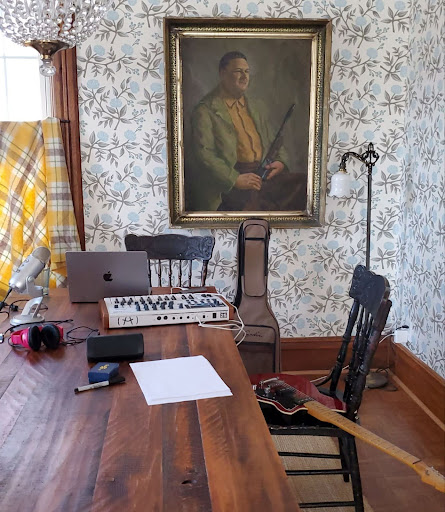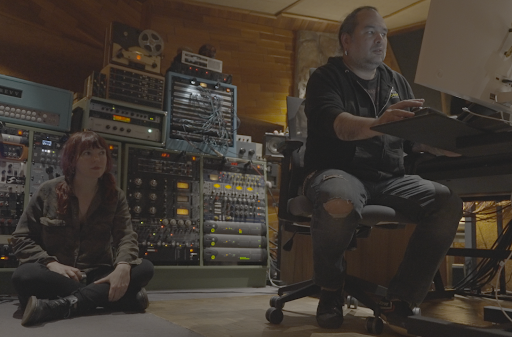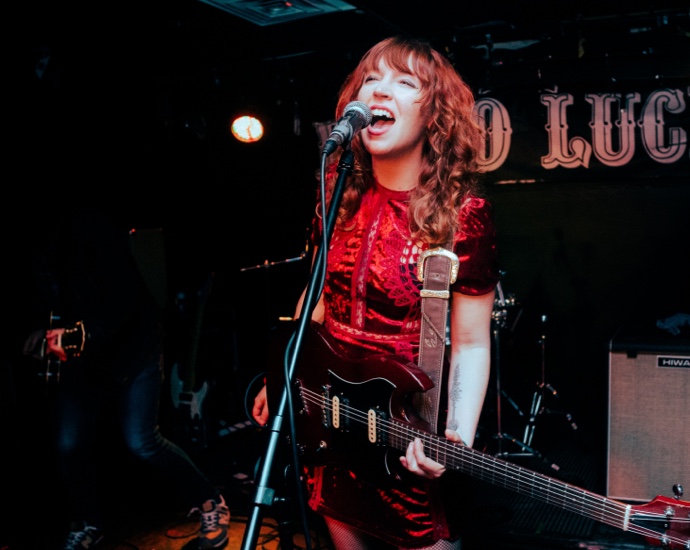Digging into the creative process, Byta speaks with artists, musicians, producers, DJs and anyone involved with music creation. A conversation about how they create, collaborate and share music. From studio setups to routines, and the first person to hear about the next 'big' work.
Where are you based?
Peterborough, Ontario.
How, when and where did you start making music? Are you primarily a musician or a producer, or do something else?
I started Joan Smith & the Jane Does with my partner Tom Juhas in 2018. I am primarily a musician/songwriter, as is Tom, and he has also grown into an excellent producer/mixing engineer.
Who would you consider some of your biggest influences when it comes to your “sound”?
Queens of the Stone Age is a huge influence songwriting-wise. Jack White has informed a lot of my vocal delivery – I have definitely enjoyed and, er, borrowed his quick fire, rhythmic style for many songs.
Explain your creative process. Do you have a routine?
For the past 3 years, my personal process involves holing myself up somewhere isolated from any other human with my computer and guitar and getting myself in the most insular mood possible and demo-ing out songs all at once. For the most part I work out the music portion first, and then fit the lyrics to the melodies, although once in a while the harmony just comes into my head with words/moods already attached and I run as far as I can with that instinct. Once I have rough demos I bring them to Tom so that he can help flesh them out and arrange them. Tom will do a similar process, although he’s willing to be a bit more public about his writing process.

What is your “studio” setup?
Tom has a pretty great home studio setup, but our most recent recording experience was in Winnipeg, Manitoba at Stereobus Recording working with Paul Yee. The studio has a really great warm vibe (including wall to ceiling orange shag carpet in the hallways and a great wood panelled live room). Paul has a fantastic collection of analog outboard gear along with a battalion of amps and delightfully weird and useful guitar pedals.

What is your process when working with other people? How is collaboration different in the studio vs working remotely?
For our most recent studio sessions, we were able to do a bunch of pre production in person. Tom had taken my demos and fleshed them out with some clearer guitar parts, real bass parts, and edited my garage band drummer (I think I picked ‘So Cal Chad’ a lot, ha) so that we were able to send the demos to our drummer and bassist to learn off of before we got together for live pre pro sessions.
At what point(s) are you comfortable letting other people hear what you are working on?
If the people are not directly related to the creative process, then I’m not very comfortable sharing any of it until there is at least a pretty solid draft mix of the finalised tracks.
Do you share your work in progress (streams or downloads)? Any technical frustrations?
We generally use the free version of wetransfer to share demos/tracks which only has a frustration due to its expiry date – so if the person we send it to doesn’t download it in time, we have to reupload and restart the whole process. For final sharing of tracks while still keeping the private, I have been using SoundCloud which has always been pretty straightforward.
How do you know when a track/album is finished?
After Tom and I listen to it obsessively on various sound systems (pro studio speakers, regular stereo set up, headphones, phone, computer, and of course, car stereo) and we both agree to finally stop obsessing.

How do you listen to the final mixes/mastered work?
Tom has been mixing our latest tracks so it is both in the studio and the home!
How important is pre-release security when sharing new work?
Fortunately no horror stories for us! Might be flattered at this point if someone went to the trouble of ‘leaking’ something before it was released.
Who on your team gets to hear the final versions first and why, what formats do they each need?
Our team would include our bandmates (or whoever we have hired for a particular track) along with our manager Andrea Caswell. We generally send out an mp3 attached in an email when the track is finalized.
Outside of your inner circle who are the people that will need to hear the new tracks next?
Next would be our sync licensing team at High Priestess, along with any p.r. Company we might be working with – we provide high quality wav. Files for sync (including instrumentals) so those are provided as downloads.
Anything you are working on, anyone you are working with and want to share?
We’re about to release a string of 3 new singles, starting with ‘Drown A Goat’ on Feb. 2nd, followed by two more singles in March. These songs represent the time we spend in Winnipeg at Stereobus and are partially funded thanks to FACTOR (the foundation assisting Canadian talent on records).
Stay tuned on everything via our website here, and socials below!

